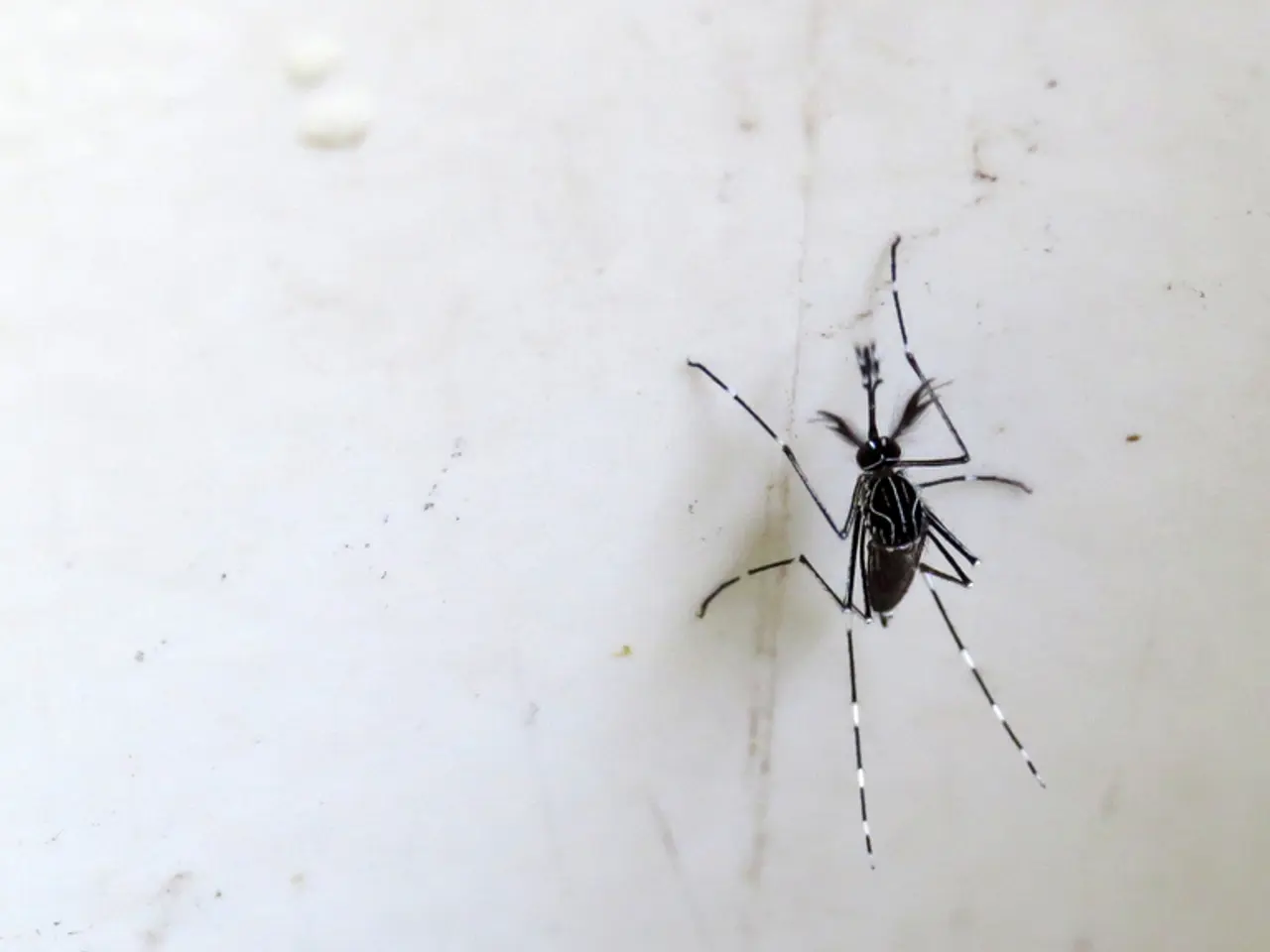Zika Virus Successor Alert: Could Oropouche Be the New Concern on the Horizon?
The Oropouche virus, an arbovirus belonging to the Orthobunyavirus genus, has been causing concern in the Americas due to its rapid urban distribution abilities and the absence of specific antiviral treatments and vaccines. This virus, first detected in Trinidad and Tobago in 1955, has since spread throughout South and Central America, with Brazil, Cuba, Panama, and Peru currently experiencing the most significant impact [1].
The Oropouche virus leads to harsh symptoms such as high fever, severe headaches, intense muscle and joint pain, nausea, vomiting, sensitivity to bright light, and can cause long-lasting states of fatigue and weakness in some patients. Rare neurological complications include meningitis or encephalitis [2].
Prevention and protection against the Oropouche virus primarily involve avoiding exposure to infected midges and mosquitoes, using DEET repellents, screening windows and installing nets for beds, draining water sources, wearing clothes that cover arms and legs, and following community-based vector control methods such as insecticide spraying and improved sanitation techniques [3]. People can also protect themselves against mosquito transmission by using insect repellent, wearing long-sleeved clothing, and installing mosquito nets with indoor screens.
Climate change is thought to influence the distribution and density of the primary vector, the biting midge (Culicoides paraensis), and possibly facilitate the establishment of mosquito species like Aedes albopictus as competent vectors. This could alter Oropouche transmission dynamics and geographic reach [1]. Urbanization also facilitates vector proliferation and human-vector contact, increasing outbreak risks in densely populated areas of the Americas [1].
Increased global travel has contributed to imported cases spreading OROV beyond traditional endemic zones. For instance, 109 cases have been reported across seven U.S. states in the last two years due to travelers returning from Cuba [1].
There is emerging concern about potential limited transmission in parts of southern Europe under suitable climatic conditions due to the ability of the invasive Asian tiger mosquito (Aedes albopictus), common in Europe, to transmit the virus. European researchers have found that under certain climatic conditions, Aedes albopictus mosquitoes can transmit OROV, suggesting a "realistic but limited risk" of Oropouche outbreaks in Europe if infected travelers introduce the virus and vector conditions are favorable [4].
Sustained monitoring of environmental and epidemiological data is emphasized as crucial. Collaborative surveillance strategies integrating climate, vector distribution, and travel data are deemed essential to anticipate and mitigate the evolving public health impact of OROV [1]. As of mid-2025, there is no large-scale OROV transmission outside the Americas, and diagnostic and therapeutic tools remain limited, underscoring the need for integrated global surveillance and research [1].
Scientists are developing vaccines for the Oropouche virus by studying Dengue and Zika virus, and modern technological mosquito and midge management strategies, expanded funding for scientific research, and social media platforms could potentially produce vaccines and treatments for the Oropouche virus [5].
References:
[1] Centers for Disease Control and Prevention. (2023). Oropouche Virus. Retrieved from https://www.cdc.gov/viralhemorrhagicfever/orov/index.html
[2] World Health Organization. (2023). Oropouche virus. Retrieved from https://www.who.int/health-topics/oropouche-virus#tab=tab_1
[3] Pan American Health Organization. (2023). Oropouche Fever. Retrieved from https://www.paho.org/hq/index.php?option=com_content&view=article&id=13061:oropouche-fever&catid=41:diseases-a-z&Itemid=351
[4] European Centre for Disease Prevention and Control. (2023). Oropouche virus. Retrieved from https://www.ecdc.europa.eu/en/disease-detection/disease-specific-information/oropouche-virus
[5] National Institutes of Health. (2023). Oropouche Virus Research. Retrieved from https://www.nih.gov/research-training/medical-research-initiatives/oropouche-virus-research-program
- Maintaining hydration, a vital aspect of health and wellness, is crucial to combat the harsh symptoms of the Oropouche virus, which can include extreme muscle pain, nausea, and fatigue.
- The scientific community is actively working on developing vaccines for the Oropouche virus, leveraging research on related viruses such as Dengue and Zika.
- Climate change, by influencing the distribution and density of the primary vector, and urbanization, which promotes vector proliferation, could widen the geographical reach of the Oropouche virus, posing a significant threat to health and fitness-and-exercise activities.
- Nutrition, along with environmental science and climate data, plays a crucial role in understanding the evolving public health impact of the Oropouche virus, making sustained monitoring of these factors essential.
- The environmental and medical-conditions aspects related to the Oropouche virus, including the insights gained from studying the virus's vectors and transmission dynamics, are critical for developing effective prevention strategies, treatment options, and potential vaccines.




